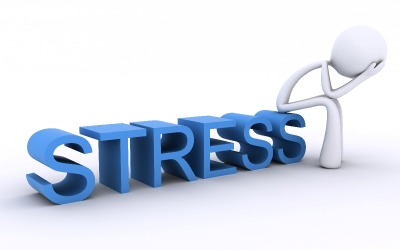Being stressed at work is hardly a unique problem, as more than eight in 10 US workers say that their jobs are stressing them out. By defining corporate wellness in terms success, our Western culture of burnout is taking its toll on your wellbeing, creativity, productivity and corporate bottom lines. So how can you get through each workday with less stress?
According to Dr. Frank Ghinassi, associate professor of psychiatry at the University of Pittsburgh, reframing your perspective plays a significant role in reducing tension and anxiety. Ghinassi says, ‘Our emotions start with our interpretation of events. It’s not so much the facts that drive what we feel, it’s what we think about. It’s the cognitive interpretations we make about the events of our lives that ends up driving how we feel.’ This is where Cognitive Behavioral Therapy (CBT) – an effective type of treatment for depression and anxiety disorders – can help. The National Institute of Mental Health notes that CBT is unlike other forms of therapy as its primary focus is on your thoughts and beliefs, rather than your actions.
One CBT-inspired strategy you can try is to prioritise your tasks, and let go of those that are less important. Ghinassi explains, ‘For many of us at work, we buy into the illusion that we are capable of doing all of the things that are asked of us in exactly the time frame we’re being asked. The first step is to reassess, cognitively, what our capacity is.’ Look at your “to do” list and rate how critical each task is. Then, focus your attention on the most important ones and leave the few at the bottom of the list for later – if you have time.
If you need help recognising and challenging your negative thought patterns, spend two minutes doing the following task:
1. Draw a table with three columns.
2. In the first column, write down the stressful event that occurred.
3. In the second column, jot down your feelings about the event in single words, and rate them on a scale of one to 100, with 100 being completely overwhelming.
4. In the third column, write every thought that’s going through your head, and stop when the two minutes are up.
5. Fold the paper in half, and don’t look at it again until 24 hours have passed.
6. Look back at what you wrote once you have some distance from the situation.
Ghinassi says, ‘I guarantee you that what you’re going to see are a lot of distorted, inaccurate, black-and-white, catastrophic thoughts. We ask you to underline those and challenge them.’
